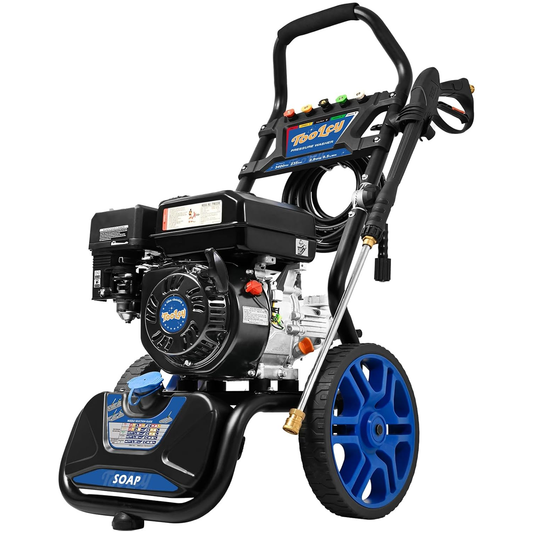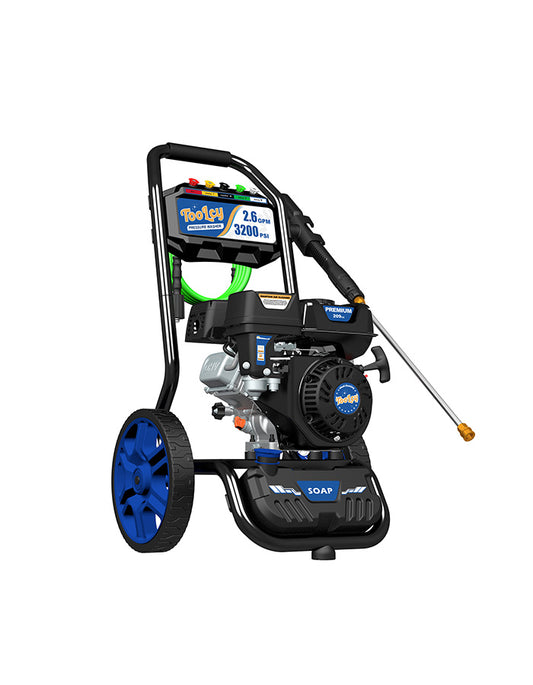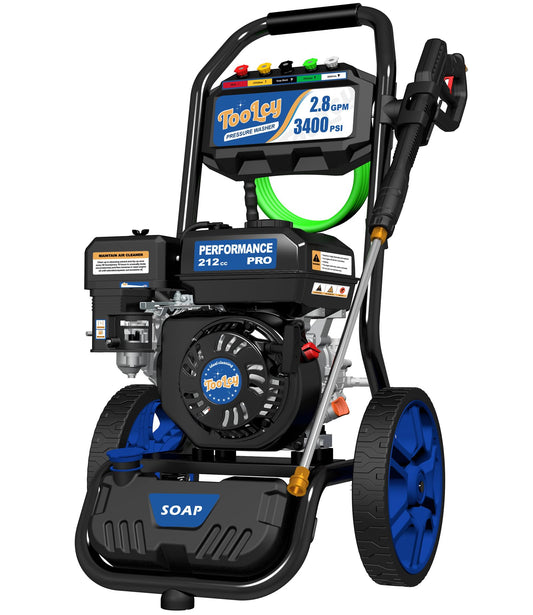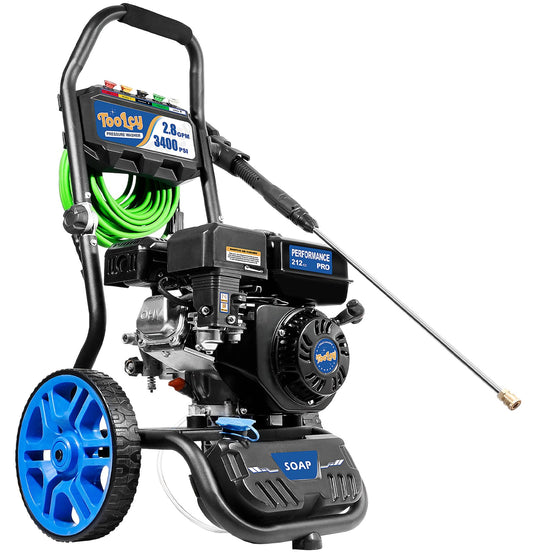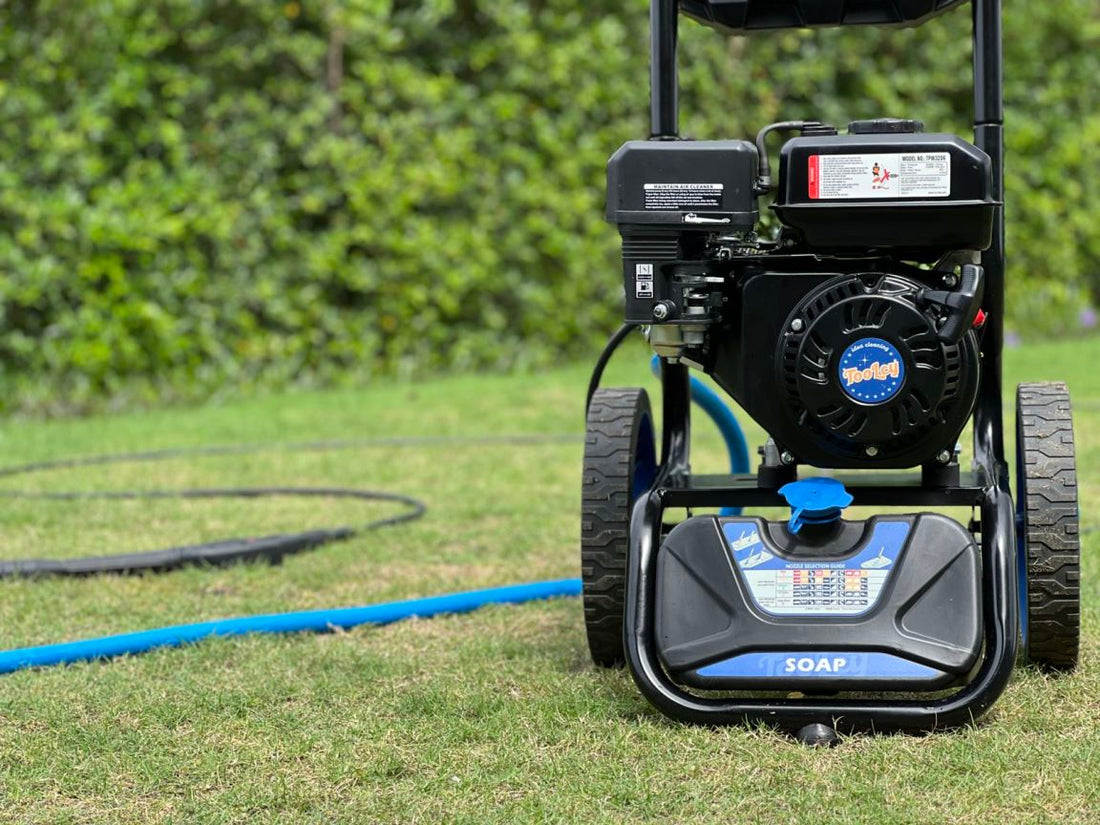
How to Maintain Your Gas Pressure Washer: A Step-by-Step Guide
Share
Keeping your gas pressure washer in top shape is essential for ensuring efficient performance and extending its lifespan. Follow these straightforward steps to maintain your equipment:
- Read the Manual: Always start by reviewing the manufacturer’s manual for specific maintenance instructions and safety precautions.
- Store It Dry: The primary rule for maintaining a high-pressure washer is to always store it in a dry location. Moisture can damage any machine, and pressure washers are no different. After each use, ensure you dry the washer if it becomes wet during operation. Allow any leftover water to drain from the hoses and pump.
- Checking and Filling Fuel: Regularly inspect the engine oil level. If it’s low, fill the Fuel Tank to about 1 inch under the fill neck of the Fuel Tank with 87 octane or higher unleaded gasoline that has been treated with a fuel stabilizer additive. Follow fuel stabilizer manufacturer’s recommendations for use. Do not use gasoline that has been stored in a metal fuel container or a dirty fuel container. It can cause particles to enter the carburetor, affecting engine performance and/or causing damage.
- Clean or Replace the Air Filter: The air filter prevents debris from entering the engine. Check the filter before each use and remove any trapped debris from the mesh. For heavily soiled filters, soak them in mild detergent and scrub with a brush. Replace disposable filters at least once a season. Reusable filters should be replaced if they become cracked, misshapen, or cannot be cleaned properly. Regularly changing filters helps avoid expensive repairs later on.
- Inspect and Clean the Spark Plug: Examine the spark plug for wear or carbon buildup. Clean or replace it as needed to ensure a smooth start and efficient engine performance. Disconnect spark plug cap from end of plug. Clean out debris from around spark plug. Inspect the spark plug: If the electrode has deposits on it, polish it using emery paper. If the white insulator is cracked or chipped, the spark plug needs to be replaced. Tighten the spark plug properly. If loose, the spark plug will cause the engine to overheat.
- Examine the High-Pressure Hose: Check the hose for any signs of damage or leaks. Replace it immediately if you notice any wear or leaks to prevent accidents and maintain optimal pressure.
- Flush the System: After each use, run clean water through the system to flush out any residual detergent or debris. This helps prevent clogs and maintains performance.
- Check and Clean the Nozzles: The nozzle is the component of the pressure washer that creates the high-pressure water stream. While it’s a simple part, it’s essential for the washer’s cleaning effectiveness. Over time, nozzles can become clogged with mineral deposits, dirt, and debris, leading to uneven spray patterns and diminished water pressure. Regularly check the nozzles for clogs or damage. Use a nozzle cleaning tool, like a needle, to clean them, or replace them if they are cracked, warped, or misshapen. Damaged nozzles can also increase wear on the pump.
- Inspect the Fuel System: Regularly check the fuel filter and fuel lines for cracks or leaks. Replace the filter as recommended and address any leaks promptly.
- Clean the Water Inlet: Mineral-rich hard water flows through the inlet towards the pump, causing mineral deposits to accumulate and eventually block the inlet, which reduces water flow. To prevent this, clean the water inlet with a descaling solution or white vinegar every 10-20 hours of operation. Allow the solution to circulate through the system, then flush it out with clean water.
-
Other Tips:
- Regularly check and replace any worn or damaged O-rings, seals, valves, and connectors to prevent leaks.
- Lubricate gaskets, pistons, and only use manufacturer-approved lubricants
- Test the Unit: Before each use, start the pressure washer and test its performance. Ensure that it reaches the appropriate pressure and that all components are functioning correctly.
Next, let’s discuss how to winterize or store your pressure washer for the long term. In addition to the maintenance tips mentioned above, if the equipment will be idle for more than 20 days, prepare the engine for storage as follows:
- FUEL: To protect the fuel tank during storage, fill the tank with gasoline that has been treated with a fuel stabilizer additive. Follow fuel stabilizer manufacturer’s recommendations for use.
-
PUMP PREPARATION:
- Disconnect the Pressure Hose and water supply hose from the Pump.
- Connect a short length of garden hose with a male hose connector on one end to the Pump’s water inlet connection.
- Use a funnel to add approximately six ounces of RV antifreeze to the Pump. NOTICE: Use only RV antifreeze. Other types of antifreeze are corrosive and can damage Pump.
- With spark plug cap disconnected and Engine switch in OFF position, pull Starter Handle several times until antifreeze begins to come out of Pump outlet fitting.
- Remove garden hose from Pump.
-
AFTER STORAGE:
- Before starting the Engine during or after storage, keep in mind that untreated gasoline will deteriorate quickly. Drain the fuel tank and change to fresh fuel if untreated gasoline has been sitting for a month, if treated gasoline has been sitting beyond the fuel stabilizer’s recommended time period, or if the Engine does not start.
- With spark plug cap disconnected and Engine switch in OFF position, pull Starter Handle several times to discharge antifreeze out of the Pump outlet fitting before using Pressure Washer.
By following these maintenance steps, you'll keep your gas pressure washer running efficiently and extend its service life. Regular care not only ensures better performance but also helps prevent costly repairs down the road.
Love Your Pressure Washer and Have Fun Cleaning!

